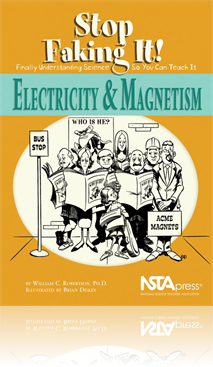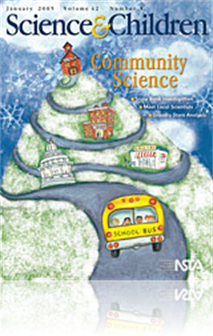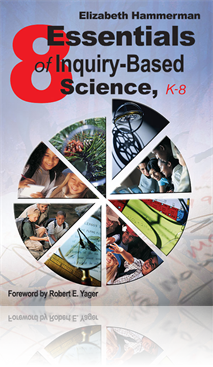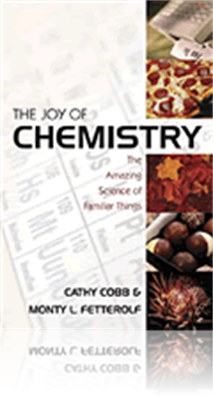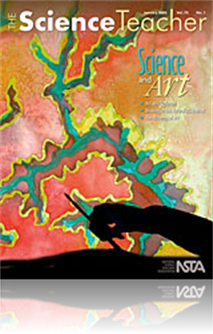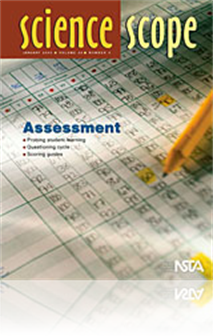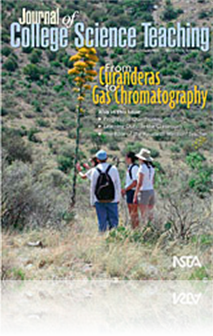All Resources
NSTA Press Book
Electricity and Magnetism: Stop Faking It! Finally Understanding Science So You Can Teach It
Shocked by static? Mixed up about magnets? Curious about currents? This book will help you get beyond memorizing electricity-related formulas, rules, and procedures so you can understand the topic at a deep level—deep enough to teach it with conf...
By William C. Robertson, Ph.D.
Journal Article
Local professors teamed up with a fourth-grade teacher to show students the similarities and differences between sedimentary rock layers and snow banks. Students observed and drew snow banks and explored the effects of melting and salting on the snow...
Acquired Book
Eight Essentials of Inquiry-Based Science, K-8
Are you both fascinated and baffled by inquiry-based science? This guide breaks down inquiry essentials into sample lessons that include data, discussion questions, and tools such as graphic organizers and analogies. You’ll learn basic and complex ...
Acquired Book
The Joy of Chemistry: The Amazing Science of Familiar Things
You’ll be drawn into this lively book because it truly captures the excitement of chemistry. Its compelling 24 demonstrations consist of easy and fun classroom activities. Deftly written by professional chemists who are also experienced educators, ...
Journal Article
Bolster students' confidence in science through two art-based biology projects described in this article.These successful projects were used in a 10th-grade biology class and focus on immunology and human evolution. Immunology, a complex and often in...
Journal Article
Science Sampler: Scientific inquiry scoring guides
The Science Inquiry Scoring Guide, developed and refined by the Oregon Department of Education, is a tool to assess students' performance on inquiry-based lessons. The scoring guide assesses students' ability to form a question or hypothesis, design...
Journal Article
This fascinating interdisciplinary project combines satellite imagery with the technique of silk painting in batik. Students choose a Landsat image, enlarge the area of interest, and paint it onto silk. To assess the project, teachers can discuss bot...
Journal Article
Science students will discover the beauty of communing with nature by utilizing a Nature journal during field observations. Nature journaling is a useful skill, independent of whether students consider themselves artists. Sketching from nature is on...
Journal Article
Dazzle students with the asthetic nature of art by integrating it into your science curriculum. For two weeks, a 10th-grade biology course is joined with the 10th-grade humanities course, which focuses on the 19th century, for an evolution unit. As p...
Journal Article
Try using an assessment cycle to effectively probe students' understanding of scientific concepts. The diagnostic, formative, summative, and confirmatory assessment can be embedded into any unit of study. ...
Journal Article
An elementary school brings in community volunteers for a full-day, all-school event focused on real world science. This article describes the planning process and types of science professionals and non-professionals recruited for the event....
Journal Article
Discover why we don't feel like we are spinning even though the Earth is spinning at close to 1,609 kph by delving into this month's, Ask the Experts column. You're sure to be satisfied with the interesting and factual answer to this thought-provokin...
Journal Article
Scope on Safety: Sticker Shock--There’s a high price to pay for ignorance about Electricity
Lighting a fluorescent bulb by touching it to the nose of a student who has one hand on an electrostatic generator is an illuminating demonstration of the properties of voltage. It demonstrates that the several hundred thousand volts of electricity p...
Journal Article
Favorite Demonstration: An Inexpensive Resonance Demonstration
Resonance is commonplace and easy to recognize when it occurs. Yet it is also one of the most impressive and often unexpected phenomenon in all of physics. This article describes a visually appealing resonance demonstrator that uses readily available...
Journal Article
Editorial: Nature, Vanity, and the Teaching of Evolution
We enjoy learning about nature--we're fascinated by medical breakthroughs, technological advances and Earth's natural wonders. But there is another side of nature that many people don't like to hear about. Instead of being harmonious and altruistic...
Journal Article
In this science- and social studies-integrated lesson, students researched the produce found at their local grocery store. The class learned the difference between fruits and vegetables and learned the origins of various “exotic” food items. Stud...
Journal Article
This article describes an “inventors workshop” in which second-grade students used Lego and Robolab computer software to create and test their own inventions. After exploring Legos and their history, students created and programmed vehicles....



